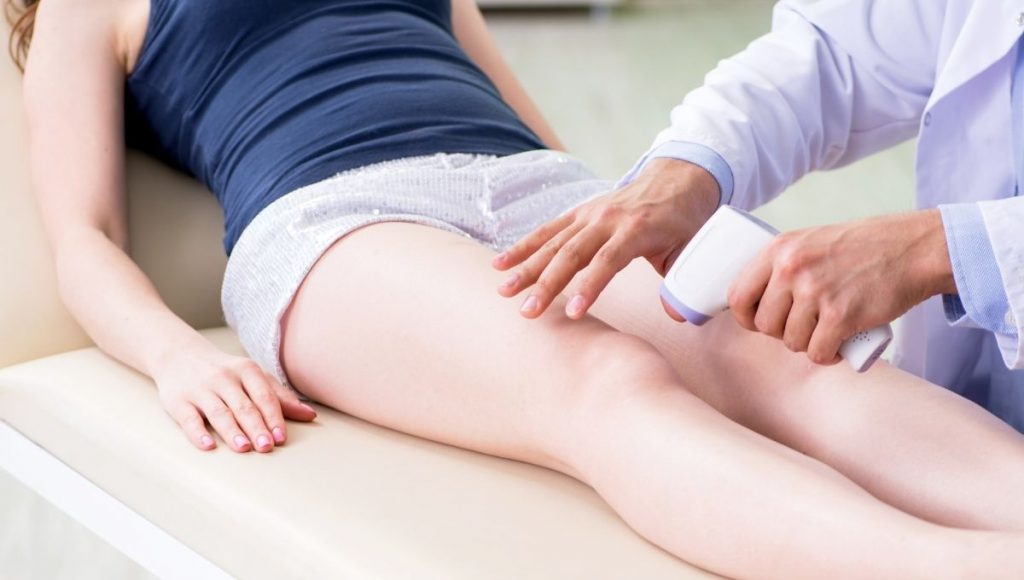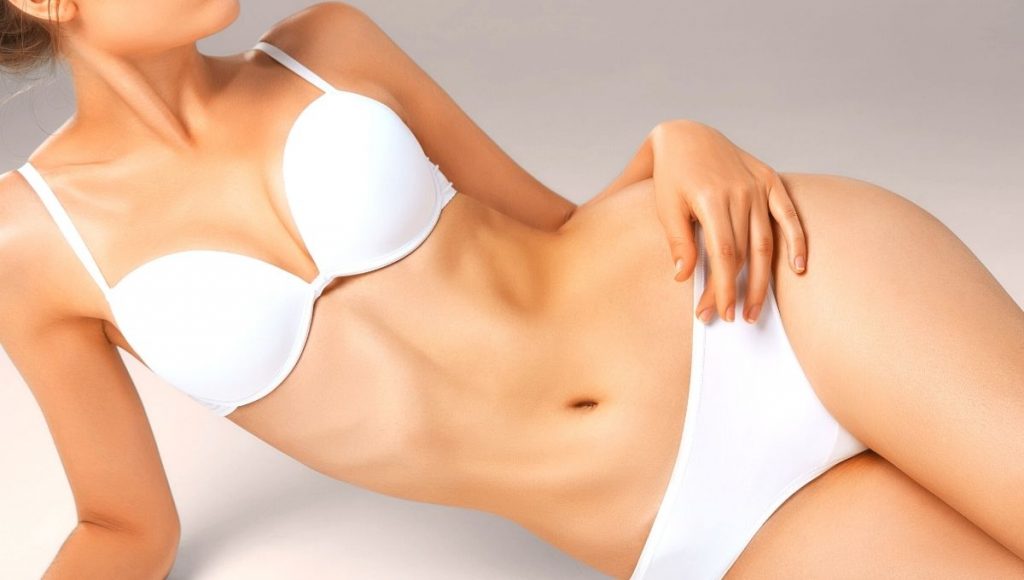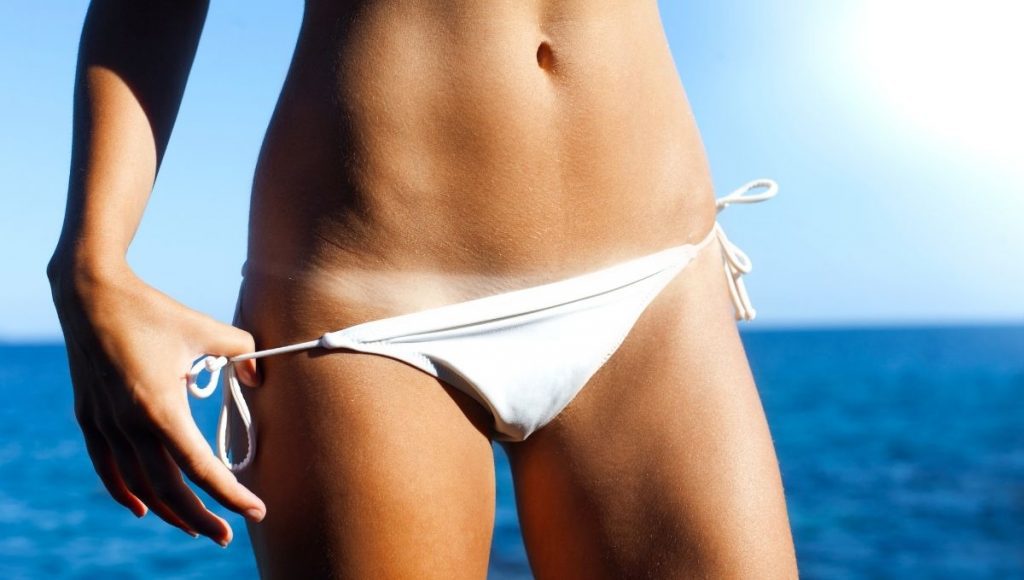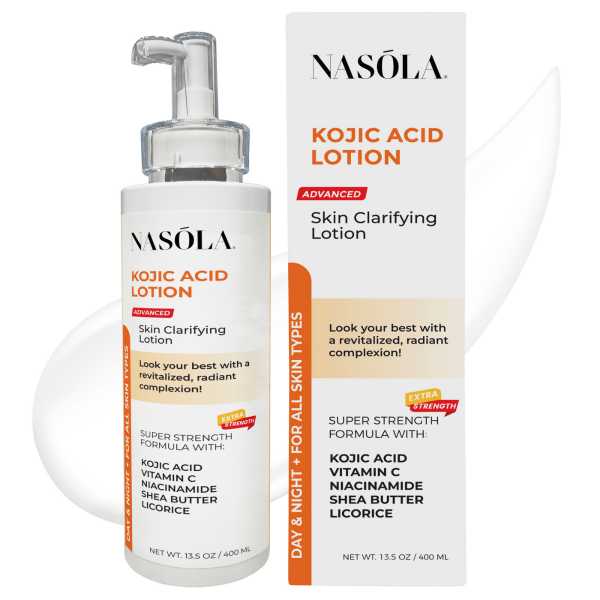You know those little bumps on your inner thighs that you can’t seem to get rid of? Yes, we’re talking about blackheads on inner thighs and going to show you the best way to eliminate them fast.
We all want to get rid of blackheads on our inner thighs. Blackheads are annoying, but they can signify bigger problems like acne or other skin conditions.
Many people know that blackheads are a common problem on the nose and cheeks. But did you know they can also form on inner thighs?
Having blackheads on your inner thighs is not only embarrassing but can also be painful. One of the most common questions we get asked is how do people cure their blackheads on their inner thighs?
This blog post will show you how to eliminate blackheads in this area and what they are and why they happen. You’ll learn two simple ways that will have them disappear in no time!
Without much ado, let’s dive in.
What is a Blackhead?

A blackhead is a small bump that appears on the surface of your skin. These bumps are open pores, and they are found anywhere where there’s a lot of oil, like around your nose or chin. Similarly, they also appear on your skin due to clogged hair follicles.
Blackheads mostly form on the upper parts of the face. However, some people develop them in other parts of their body, including their inner thighs.
They are so named because the skin around them appears dark or black. A mild form of acne, blackheads usually appear on the face but can also occur on the following body parts:
- Back
- Chest
- Neck
- Arms
- Shoulders
- Inner thighs
In contrast to acne, blackheads are caused by excess oils and dead skin cells becoming trapped in pores, which then oxidize in the presence of air. The result is an inflamed blackhead that can be extracted or left alone depending on severity.
What Causes Blackheads on Your Inner Thighs?

There is a tendency for blackheads to form on the inner thighs due to the larger pores in this area and trap dirt more easily.
A variety of factors can cause blackheads on your inner thighs. Genetics, oily skin, friction, and bacteria can all contribute to them.
In this section, we’ll examine some of these causes.
1. Genetics
According to the NIH, a person’s genetic makeup may also influence the development of inner thigh acne.
Some hormonal changes, including puberty, menopause, and perimenopause, can cause pores to produce excess oil and clog.
Since this isn’t a lifestyle or environmental issue, accepting it can be even more challenging.
2. Having oily skin
It is not uncommon for people who have oily skin to experience blackheads on their inner thighs.
And this can happen when the oil from your legs and feet mixes with sweat, causing a film of bacteria over time that creates those pesky bumps.
The external buildup of sweat, oil, and dirt can lead to pores becoming clogged and causing blackheads. If the skin in this area is unwashed after extensive exercise or dancing, it is more likely to breakout blackheads.
In this case, the sebum oil clogs your pores, mixing with the excess oils to create sweat which causes blackheads to form or acne breakouts.
3. Friction and sweating
Friction causes blackheads to form in most areas of our bodies. It is caused by sweat and friction from your jeans rubbing against the delicate pores of your thigh, damaging them over time.
Likewise, if you wear tight clothes or have sweaty hands often, it will be more likely for this condition to manifest.
Various fabrics, such as rubber, vinyl, and polyester, do not wick moisture away from the body as effectively as natural fibers.
Hence this leads to excessive sweating between the thighs, resulting in blackheads developing on the inner thighs.
4. Yeast and bacteria
You may develop blackheads on your inner thighs due to yeast or bacteria.
Yeast is present in sweat, so when the skin comes into contact with this moisture, it can throw off the balance of bacteria living there and lead to blackheads.
Moreover, yeast and bacteria can also cause these large pores to appear, which leads to acne-inducing breakouts if left untreated.
5 Best Ways to Get Rid of Blackheads on Inner Thighs

So how do you get rid of blackheads on inner thighs for good? Well, different remedies work well depending on your skin type.
Listed below are some practical methods for treating and eliminating those pesky spots on your inner thighs.
1. Use Kojic acid skin lightening cream or lotion for blackheads on inner thighs
Skin lightening products such as Nasola Kojic Acid Cream or Nasola Kojic Acid Lotion are among the most popular blackheads on inner tights treatment options.
-
 Nasola Kojic Acid Cream$21.95Rated 4.7 out of 5 based on 18 customer ratings
Nasola Kojic Acid Cream$21.95Rated 4.7 out of 5 based on 18 customer ratings -
 Nasola Kojic Acid Lotion$29.95Rated 4.8 out of 5 based on 20 customer ratings
Nasola Kojic Acid Lotion$29.95Rated 4.8 out of 5 based on 20 customer ratings
Nasola Kojic Acid Cream is a rich natural skin lightening cream for achieving glowing and even skin tone. You can use it to lighten and brighten your skin without harsh chemicals
And with Nasola Kojic Acid Lotion, you put the power of Kojic Acid, Vitamin C, Niacinamide, Shea Butter, and Licorice to work with Nasola Kojic Acid Cream.
Interestingly, kojic acid is a derivative of fungi and a naturally occurring ingredient. It’s commonly used in Japan and the Philippines to aid a healthy skin tone.
Using the latest skin lightening technology, these two products brightens, lightens, and deeply moisturizes your skin for a youthful, radiant glow.
So if you have blackheads on your inner thighs, you can use either of these two products for faster remedy.
2. Exfoliating your inner thighs
Exfoliation is an excellent way to get rid of blackheads at their source. Aesthetically, the skin looks cleaner and brighter after the removal of dead skin cells.
It would be best if you tailored your exfoliation routine to your skin type and tolerance level.
The two main types of exfoliation are chemical and mechanical:
2.1 Chemical Exfoliation
Chemical exfoliation is a method of removing blackheads on the inner thighs, typically accomplished using salicylic acid (BHA) or alpha hydroxy acids (AHAs).
In addition to reducing fine lines and hyperpigmentation, chemical exfoliation can also reduce hyperkeratosis.
It eliminates dead skin cells that clog pores and cause acne and breakouts. After using chemical exfoliation products, wear sunscreen since it may make your skin more sensitive to the effects of the sun.
2.2 Mechanical Exfoliation
The mechanical exfoliation process involves using sponges, loofahs, or brushes to remove dead skin cells mechanically.
Using abrasive materials makes it possible to achieve the same effects as physical exfoliation with more mechanical action, resulting in removing dead skin cells and revealing fresh, brighter layers beneath.
When using mechanical exfoliants, be careful not to scratch or irritate your skin. Some blackhead treatments are mechanical exfoliants since they contain ingredients that remove dead skin cells that cause blackheads.
3. Cleansing your inner thigh daily
You can treat blackheads on the inner thighs by using a gentle cleanser and applying it to the affected area daily.
If you have excess oil on your inner thighs, a great way to treat the problem is by cleansing that area. That should help reduce blackheads and prevent future problems with blackheads.
Therefore, to eradicate these unsightly blackheads on the inner thigh, it is highly recommended to start with cleansing.
In most cases, you don’t need to seek out products formulated specifically for your thighs. If you don’t have one, use a liquid body wash. You can use the same cleanser you use for your face.
4. Treat the inner thighs with topical treatments
Among the easy and most effective ways to treat blackheads on inner thighs is by using a topical treatment.
These products help unblock pores, stop comedones from developing into ingrown hairs, and prevent whiteheads from becoming inflamed or infected.
So if you’re interested in getting rid of blackheads on the inner thighs, you can also use topical treatments with salicylic acid or benzoyl peroxide.
These ingredients will help exfoliate and unclog pores. Mainly, salicylic acid works by penetrating the pores and dissolving excess sebum, which helps minimize blackheads.
5. Blackhead removal with a natural scrub
Another way to get rid of blackheads on inner thighs is with a natural scrub because it’s less harsh.
While a regular wash won’t necessarily remove them all, but scrubs are great because they exfoliate and open your pores so that the skin can breathe.
You can use a small amount of a natural scrub on a damp inner thigh skin and gently rub it in circular motions for two minutes. To get the best results, try using this treatment once a day or every few days.
The Best Way to Prevent Blackheads on Your Inner Thighs

For most people, the inner thigh is one of the areas prone to blackheads. You can prevent blackheads from occurring in the first place by following this routine:
- Exfoliate twice per week with an AHA or BHA treatment. Doing this helps remove dead cells, dirt, debris that may be clogging pores.
- Cleanse the inner thigh area every morning and evening. Less than 1% of women wash their thigh thighs morning and night.
- Wearing loose clothing, especially while you’re sleeping, is one of the best ways to prevent blackheads on your inner thighs.
- You should always keep your thighs clean and dry to avoid blackheads. If you want to prevent them, wipe the area after sweating with a towel.
- Take care of your skin by drinking plenty of water and eating lots of fresh vegetables and fruits.
Blackheads on the inner thighs are a common occurrence that you can prevent by following the above tips.
Seeking the Help of a Dermatologist

It can be a cause for concern if you have blackhead outbreaks on your inner thighs.
Whether you’ve tried all the home remedies out there or not, seeking professional help is a good idea if your blackheads persist in the most difficult-to-reach places of your body and if your breakouts continue despite better health choices.
You should also visit a dermatologist if the blackheads are painful and become a bigger nuisance than just cosmetic. Your case will be examined by a professional who will prescribe the best course of action based on your needs.
Also, if you feel your self-confidence is slipping away due to the blemishes, it is time to seek professional treatment so that you can pinpoint the issue and resolve it.
Frequently Asked Questions

Let’s now take a look at some of the common questions regarding blackheads on inner thighs:
Blackheads are the result of sebum accumulation, a natural oil found on our skin. Often, this buildup occurs near hair follicles, where the opening pushes against the surface of the skin.
The inner thigh area accumulates sebum that should normally wash away easily, blending it with dead cells and bacteria to form dark particles called blackheads.
Using a kojic acid cream or lotion like Nasola Kojic Acid Cream or Nasola Kojic Acid Lotion help remove the dark skin on your inner thighs.
Kojic acid is a naturally occurring ingredient found in many skin care products, and it has fantastic benefits when applied directly to the skin.
The benefits stemming from use do not stop there, though. The cream or lotion will gradually make any uneven areas you have to appear more even, giving you flawless and beautiful looking skin with regular application.
You can get rid of pimples between your thighs by using kojic acid cream or lotion like Nasola Kojic Acid Cream or Nasola Kojic Acid Lotion on the skin twice a day for several weeks.
Kojic acid is an organic substance that inhibits the production of tyrosinase, which in turn limits melanin production (to get rid of dark patches).
In addition, Kojic acid will also kill off some bacteria on your surface skin and relieves inflammation caused by either stretching or rubbing during exercise.
Cystic acne on the inner thighs is caused by the oxidation that occurs naturally in your skin might break down the hair follicles’ tissue.
And this leads to an increased amount of sebum production or dead skin cells, which causes a buildup and clogging of sorts. In other words, too much oil.
Using a kojic acid soap like Nasola Original Kojic Acid Skin Brightening Soap is a great way to cleanse externally without stripping.
But for some, using benzoyl peroxide or salicylic acid might be necessary on the affected areas and moisturizing lotions around these areas many times throughout the day.
It’s not okay to pop a pimple on your inner thigh, but if you want to get rid of it, try squeezing the pimple gently for one minute and then stopping for five minutes before repeating the process.
Doing this will help reduce swelling and give you time to develop a better treatment plan that won’t encourage more breakouts!
Pimples develop because bacteria are entering the hair follicle. When you press on them too hard, they will rupture, releasing more bacteria in addition to pus which can spread and lead to infection– or at least inflammation.
Furthermore, popping a pimple can scar the skin and cause bleeding. So you should avoid doing this, especially in places like your inner thighs where scars are challenging to clear.
Whiteheads on the thighs are usually caused by excess keratin production in the hair follicles. Skin cells that line the follicle then fill and become clogged with a buildup of dead skin cells, oils, and bacteria.
Exposure to too much sun can also be a culprit when it comes to getting whiteheads on your thighs.
Kojic Acid cream or lotion is an excellent remedy against whiteheads. And this is because it exfoliates dead skin cells {reduces keratin granules} while simultaneously eliminating oil, dirt, and other debris from inflamed areas such as pimples or blackheads.
One way to decrease the appearance of blackheads is to scrub your skin well with a kojic acid cream or lotion like Nasola Kojic Acid Cream or Nasola Kojic Acid Lotion.
Kojic acid is often used in products that help keep one’s skin looking fresh and clean. Kojic acid stops melanin from producing, which means that it will be less likely for you to have dark spots on any given area as time passes.
You can also apply kojic acid cream or lotion like Nasola Kojic Acid Cream or Nasola Kojic Acid Lotion in those areas where you might notice more bumps than regular skin tone.
It’s worth noting that unlike commercial creams with harsh chemicals, this soap is free of sulfates and liquid detergents, which strip the skin’s natural oils.
Blackheads on the inner thigh are not necessarily a sign of unclean behavior or “dirty.”
The best way to explain why you’re getting blackheads on your inner thighs would be to point out that hair follicles are one source of breakouts.
Skin glands (sebaceous) produce oil called sebum. It’s usually produced in small quantities, but it can get clogged and come out through pores as a pimple.
Another possible cause for blackhead formation on the inner thigh could be sweat buildup from biking, cycling, or sitting. The activity causes oil glands around sweat ducts to produce more than they usually do, creating an opportunity for dirt and bacteria to contaminate those bumps.
Yes, you can get rid of blackheads on inner thighs naturally. A gentle and natural way to remove blackheads is using a kojic acid cream or lotion like Nasola Kojic Acid Cream or Nasola Kojic Acid Lotion.
It depends on the severity and texture of your skin.
When using cream or lotion with kojic acid such as Nasola Kojic Acid Cream or Nasola Kojic Acid Lotion, blackheads and whiteheads are more easily removed from the skin.
For less severe, non-oily blackheads, you might see results within two to four weeks.
And for more severe blackheads with a more oily surface, it may take four to six weeks for them to gradually go away once you’ve applied the kojic acid soap daily.
Final Thoughts
As you can see, blackheads on the inner thigh are a common problem for many women. These bumps can be painful and uncomfortable, but luckily there is plenty that you can do to prevent them or eliminate them quickly.
Throughout this article, we discuss the best tips we have for preventing blackheads on your inner thighs, as well as what treatments work well when they appear.
We hope these helpful hints will help you live more comfortably with healthy skin! Remember- if all else fails, don’t hesitate to seek out professional advice from a dermatologist.
What have been some of your tactics? Have any worked better than others? Let us know in the comments below so we can learn from each other’s successes and failures.

